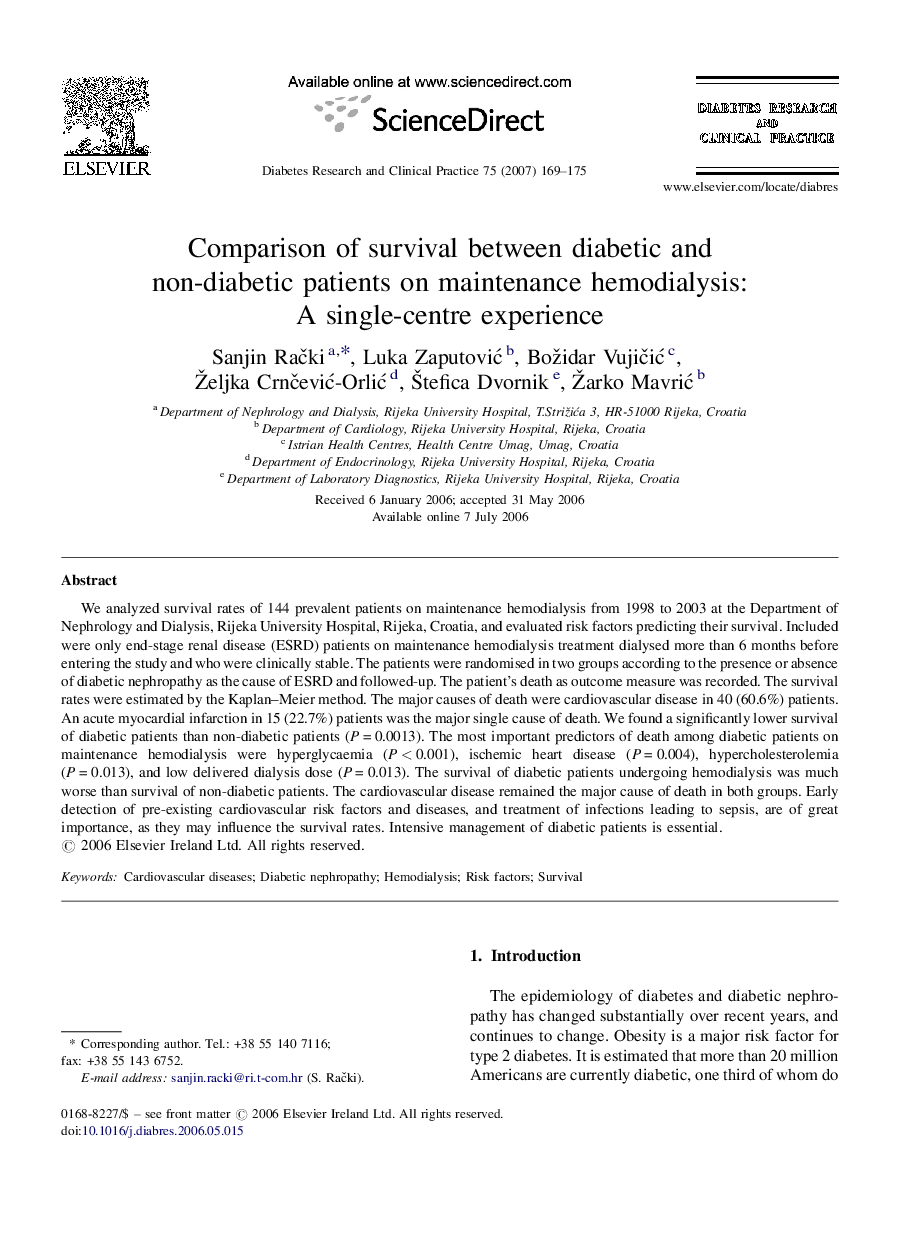| Article ID | Journal | Published Year | Pages | File Type |
|---|---|---|---|---|
| 2799016 | Diabetes Research and Clinical Practice | 2007 | 7 Pages |
We analyzed survival rates of 144 prevalent patients on maintenance hemodialysis from 1998 to 2003 at the Department of Nephrology and Dialysis, Rijeka University Hospital, Rijeka, Croatia, and evaluated risk factors predicting their survival. Included were only end-stage renal disease (ESRD) patients on maintenance hemodialysis treatment dialysed more than 6 months before entering the study and who were clinically stable. The patients were randomised in two groups according to the presence or absence of diabetic nephropathy as the cause of ESRD and followed-up. The patient's death as outcome measure was recorded. The survival rates were estimated by the Kaplan–Meier method. The major causes of death were cardiovascular disease in 40 (60.6%) patients. An acute myocardial infarction in 15 (22.7%) patients was the major single cause of death. We found a significantly lower survival of diabetic patients than non-diabetic patients (P = 0.0013). The most important predictors of death among diabetic patients on maintenance hemodialysis were hyperglycaemia (P < 0.001), ischemic heart disease (P = 0.004), hypercholesterolemia (P = 0.013), and low delivered dialysis dose (P = 0.013). The survival of diabetic patients undergoing hemodialysis was much worse than survival of non-diabetic patients. The cardiovascular disease remained the major cause of death in both groups. Early detection of pre-existing cardiovascular risk factors and diseases, and treatment of infections leading to sepsis, are of great importance, as they may influence the survival rates. Intensive management of diabetic patients is essential.
